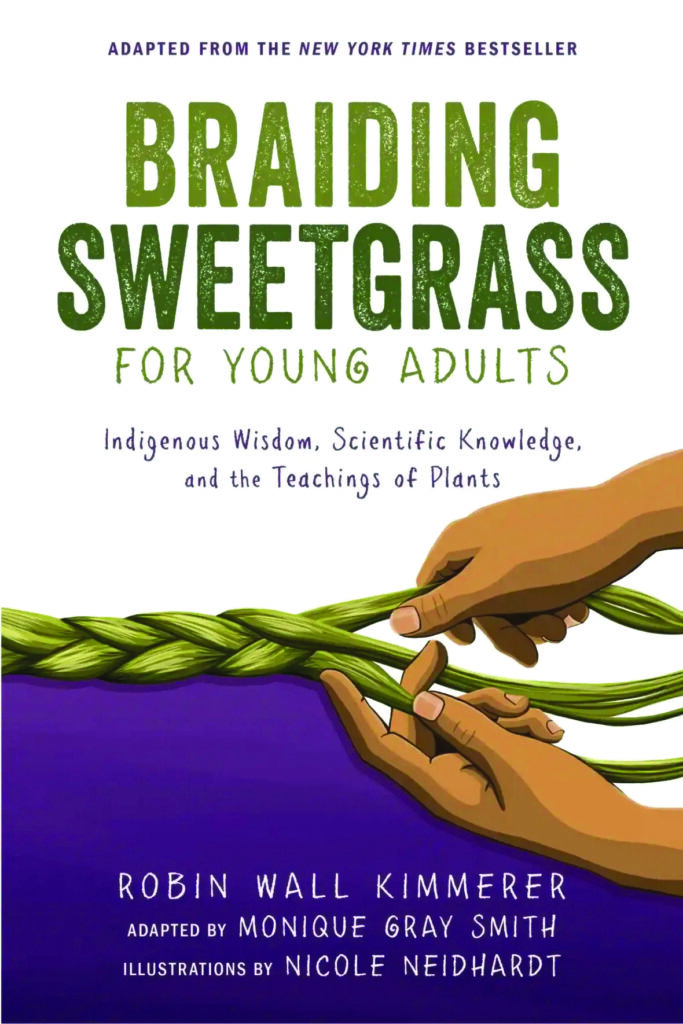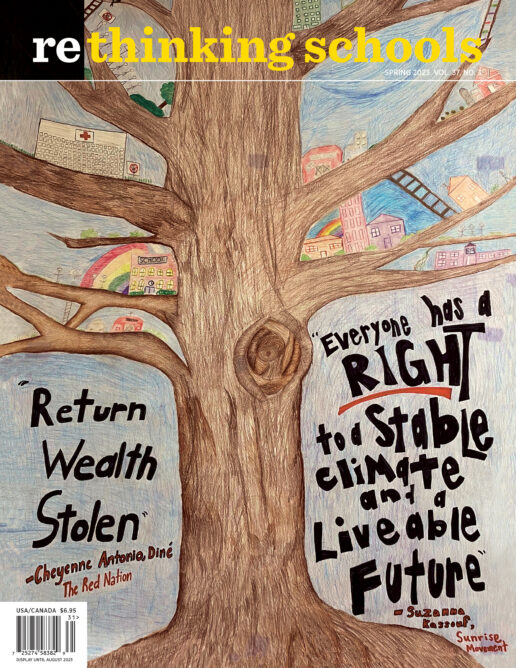Our picks for books, videos, websites, and other social justice resources 37.3






Picture Books
Still Dreaming/ Seguimos soñando
Written by Claudia Guadalupe Martínez
Illustrated by Magdalena Mora
Translated by Luis Humberto Crosthwaite
(Children’s Book Press, 2022)
40 pp.
A child’s poignant narration of their family’s repatriation journey to Mexico during the 1940s — “the only way to stay together as a family” — Still Dreaming/ Seguimos soñando is packed with teaching possibilities. This carefully illustrated picture book slowly reveals the context of the life the family is leaving behind, and the ways their story connects with others and still resonates today. As they meet other families on similar journeys, the story lists examples of the essential work Mexican Americans did in places like Los Angeles, Minnesota, Michigan, and Chicago. And the author’s note provides important historical context about the annexation of roughly half of Mexico following the U.S. war on Mexico, including historians’ estimate “that between 1930 and 1940, 2 million people living in the United States were ‘repatriated’ to Mexico.” Along with thoughtful exploration of the historical context in the author’s note, this story can generate rich conversations about annexation, immigration, deportation, and, as Claudia Guadalupe Martínez puts it, the theme “still dreaming of permanence.”
Curriculum
Braiding Sweetgrass for Young Adults
By Robin Wall Kimmerer
Adapted by Monique Gray Smith
Illustrations by Nicole Neidhardt
(Zest Books, 2022)
304 pp.
As adapting writer Monique Gray Smith states in the introduction, “. . . this book is a bundle of healing stories that allow us to imagine a different relationship in which people and land are good medicine for each other.” Like Robin Wall Kimmerer’s original Braiding Sweetgrass: Indigenous Wisdom, Scientific Knowledge, and the Teachings of Plants, this beautifully woven collection of rich, insightful, and practical stories offers fresh perspective, a paradigm shift, and a hopeful path forward. Though the book could be used with older students in its entirety, full-page graphics, individual chapters, sections, even quotes could be used on their own. For example, the chapter “Asters and Goldenrod” stories the discrimination Kimmerer experienced in a field dominated by white male scientists and raises questions about the meaning of “objectivity” in science. A later chapter, “Mishkos Kenomagwen: The Teachings of Grass,” provides a deeper analysis of what it means to combine science and traditional knowledge and provides “a template for future research projects you may be asked or required to do.” Kimmerer’s stories will serve as robust writing models and be skillfully woven into climate justice curriculum that centers Indigenous wisdom.
A Young People’s History of the United States
By Howard Zinn, adapted by
Rebecca Stefoff with contributions
by Ed Morales
(Seven Stories Press, 2023)
518 pp.
Countless people say that reading A People’s History of the United States as adults transformed their understanding of U.S. history, and they lament that it took so long. A Young People’s History of the United States makes it possible for middle and high school teachers to ditch the textbooks and introduce this history — more accurate, engaging, and relevant to young people’s lives today. This revised and updated edition includes two new chapters by Ed Morales on Latinx history, additional stories of young activists, and more photos and artwork. Howard Zinn’s introduction takes on questions of patriotism, point of view, heroes, and the accusation that his work disillusions young people. It is a valuable essay for students to read and discuss regarding all their school texts and the media. At the moment those on the right are passing laws against teaching honestly about U.S. history, this text places people’s history at the center. It’s a book worth fighting for to keep in the classroom.
Policy/History
Merchants of Deception: Parent Props and Their Funders
By Maurice T. Cunningham
(Network for Public Education, 2023)
32 pp.
Merchants of Deception: Parent Props and Their Funders is a how-to guide to identify the ideological drivers of some of the most prominent “parents’ rights” groups that show up to disrupt school board meetings, call for book bannings, and demand the whitewashing of U.S. history. The brief, written by Maurice T. Cunningham and produced by the Network for Public Education, is not just an exposé, but an organizing guide with lots of helpful tips. Cunningham differentiates conservative and neoliberal groups — demonstrating where they share an agenda and where their ideologies diverge. He offers suggestions for how to identify parent front groups — dig deeper than their ever-present “creation story” — and unwrap the dark money funding streams supporting them. Cunningham reminds us that “most parents don’t want book bans and inflammatory politics. They want a good education for their children.” It is critical that educators and parents not be afraid to stand up and question the real agenda of these so-called angry parents. In the report’s appendix, Cunningham includes a list of resources to help us unveil the real power behind parent prop groups and offers suggestions for how to challenge them.
School Clothes: A Collective Memoir of Black Student Witness
By Jarvis R. Givens
(Beacon, 2023)
218 pp.
As Jarvis Givens recounts in the book School Clothes: A Collective Memoir of Black Student Witness, “There has yet to be a single historical work devoted to the study of Black students’ experiences, where their voices are privileged as the primary source for historical interpretation.” By weaving together details from memoirs, autobiographies, poems, diaries, oral histories, and inscriptions in yearbooks, Givens offers insight into how Black students have experienced school throughout the history of Black education. Metaphorically and symbolically, school clothes have served as an armor that Black children wear to both denote the seriousness of schooling in Black communities, and as a reclaiming of their childhood from the continued effects of enslavement. As Givens writes, “Knowing beauty to be a method, Black students dressed themselves in dreams that emerged over generations of African Americans striving within the veil.” School Clothes uplifts a critical history that pushes back on deficit narratives about Black students by placing their stories and perspectives at the center.
Cultivating Joyful Learning Spaces for Black Girls: Insights into Interrupting School Pushout
By Monique W. Couvson (Morris)
(ASCD, 2022)
147 pp.
How can schools strive to be locations for healing? This is the question that Monique Couvson contends with in one of her newest books. She writes, “. . . I have come to understand that schools need to be engaged as locations for healing so that they can be locations for learning. Healing facilitates safety. Safety facilitates joy.” With particular attention to how schools can be spaces worthy of Black girl brilliance and free of the harms of school pushout, Couvson offers a framework for how educators can facilitate joyful spaces focused on healing over criminalization and punitive discipline. Drawing on in-depth conversations with three educators, Couvson engages the ancestral and cultural traditions of oral storytelling. She invites educators into a conversation about what schools should consider when cultivating learning spaces that emphasize critical consciousness-raising, creativity, and “communities as co-constructors of safety.”







